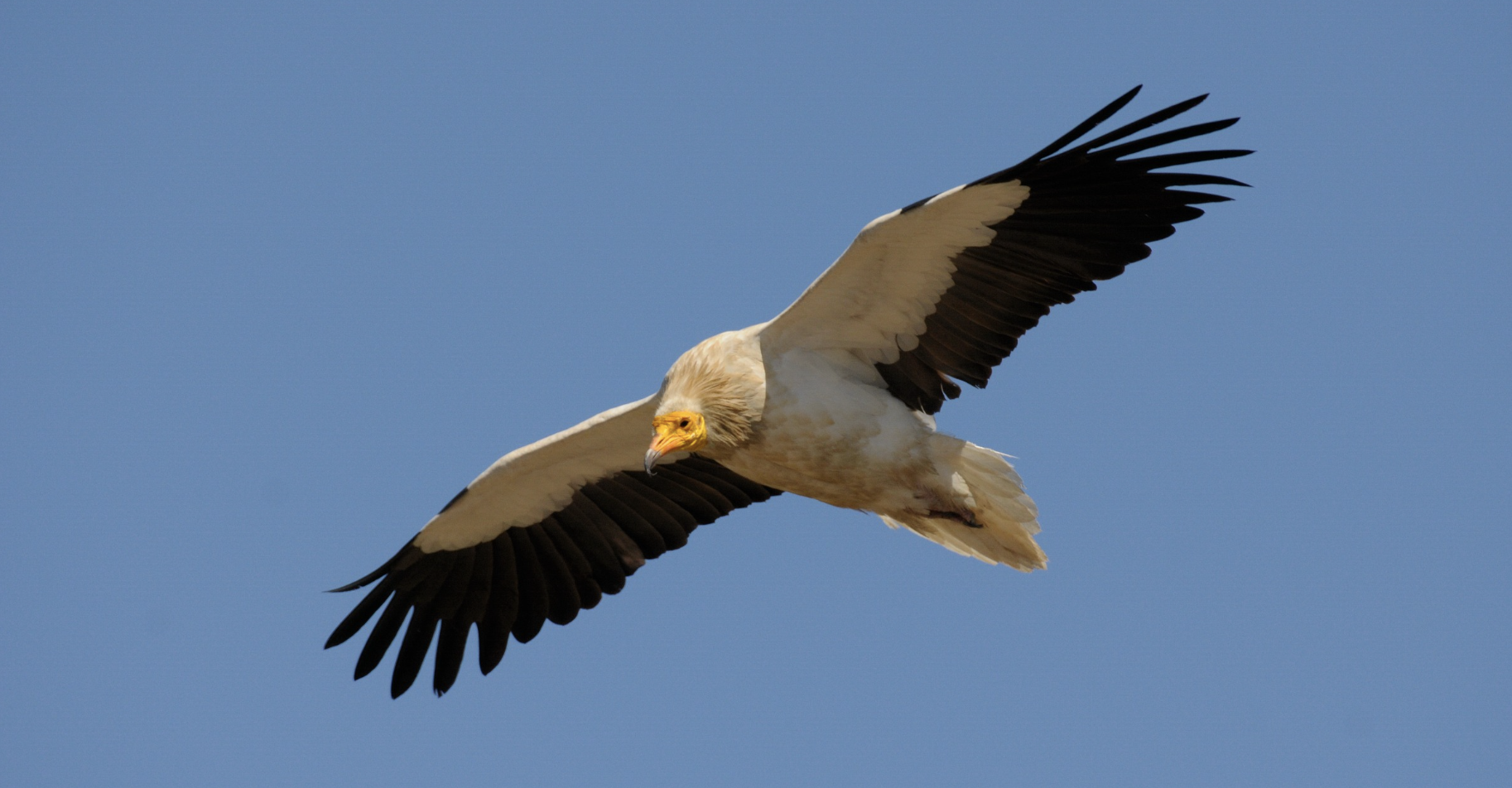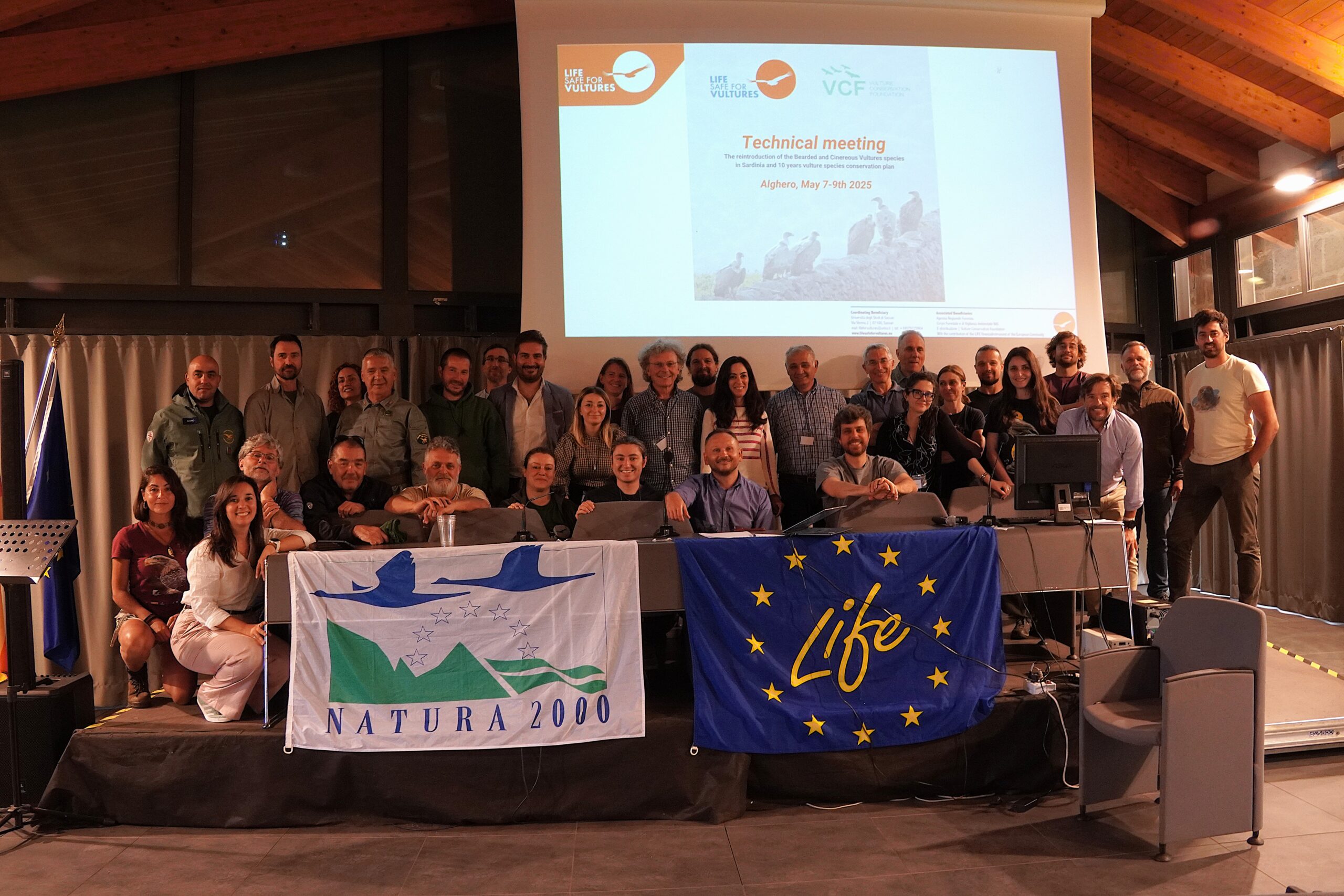
We received an update about the movements of the first Egyptian Vulture equipped with a GPS tag within the LIFE Rupis! The GPS data of this vulture, named Rupis to celebrate the project, has transmitted again after 11 months since the last update, confirming that Rupis is well and that he successfully migrated to Africa once again!
Tagging Rupis’ and tracking his movements
The project team caught and tagged Ruips in 2016 when he was a subadult non-breeder. Rupis was the first Egyptian Vulture equipped with a GPS tag within the project. Monitoring the movements of the species in the breeding areas as well as along the migration route was a significant part of the project, to help identify threats and implement targeted conservation actions.
Typically, from spring to summer, the bird has been mostly moving in the Douro, but making excursions to Salamanca and also to the north of the Douro. This is normal for a non-breeding bird that is back in the summer range. Every autumn, since we tagged the individual, we have been observing his migratory journey from Europe to sub-Saharan Africa where he spends the winter months. Along the way, he often made a stop at Caceres, Extremadura in Spain, a site with plentiful food and also where the non-migratory population of Egyptian vultures spend their winters. In Africa, he usually winters in western Mali, close to the border with Mauritania.
Receiving GPS data again
However, in November 2019, we stopped receiving GPS data from the bird. That often happens with LIFE Rupis tagged birds when they enter the deserts with no GSM coverage. However, we were quite worried when he did not resurface a few months later.

We had hope again when this past summer, a project team in the field were confident that Rupis was in Portugal due to some observations in the breeding area. However, we did not receive new GPS data and had to assume that the tag broke and is no longer working. But what a surprise when suddenly, Rupis sent data showing some locations from its usual wintering grounds in Mali. Now, we are sure that Rupis is fine!
This shows how difficult it is to monitor these birds and that technology helps a lot to keep an eye out and to find out where the biggest threats are for these great birds.
We are glad to be able to track the movements of the first-ever Egyptian Vulture we tagged within this project. We will keep tracking his movements and hope that he successfully returns to the Douro next year to breed!
LIFE Rupis

The LIFE Rupis conservation project, led by Portuguese wildlife organisation Sociedade Portuguesa para o Estudo das Aves (SPEA), and funded by the European Union’s LIFE Fund and the MAVA Foundation, is working in the cross-border Douro region of Spain and Portugal to protect and strengthen the populations of Egyptian vultures and Bonelli´s eagle. With around 135 breeding pairs, the region has one of the largest population of Egyptian vultures in Europe. Creating a network of feeding stations, improving habitat and nesting sites as well as tackling the major threats of electrocution from electricity pylons and illegal wildlife poisoning, the LIFE Rupis project will strengthen the population and improve breeding rates.




